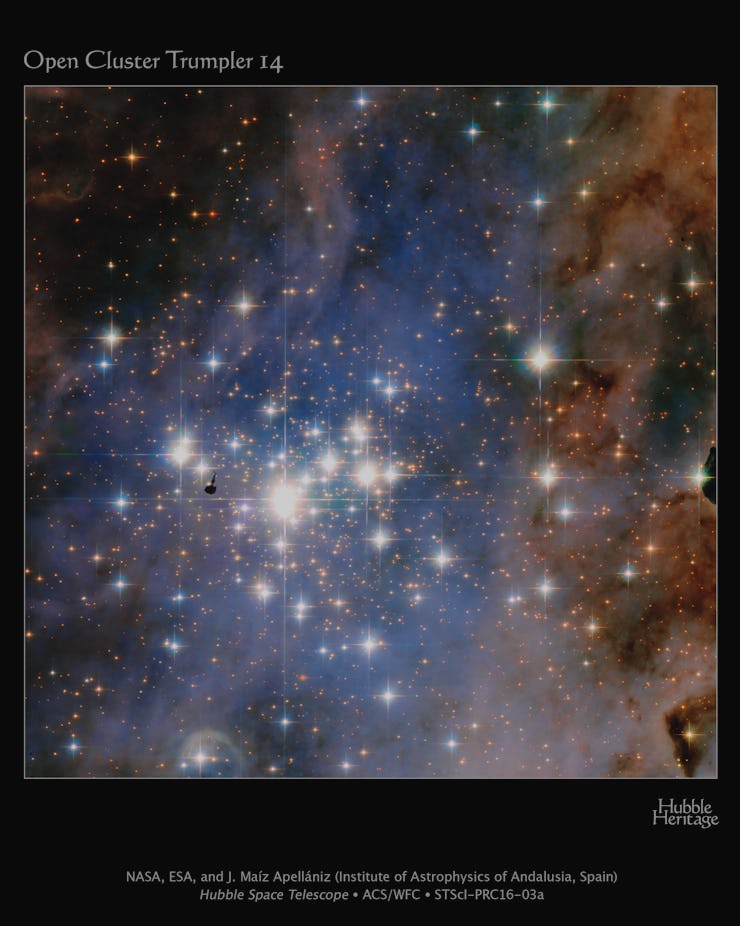These "Celebrity Stars" Are Young, Hot, and Ready to Crash and Burn
At just half a million years old, these stars are practically babies.

Thank NASA’s Hubble Space Telescope for this stunning image of a special little piece of our galaxy. The Trumpler 14 cluster is located in the Carina Nebula, about 8,000 light years from Earth.
The cluster is only half a million years old, and as a result it contains some of the biggest and most luminous stars in the galaxy. However, since they are so distant, they cannot be made out without the help of a high-powered telescope.
Trumpler 14 is a brilliant cluster of young stars in the Carina Nebula.
Some of the brightest stars in the cluster are called “celebrity stars” because they shine brightly but only for a brief moment. In a few million years, those stars will explode as supernovae, sending stardust out into the universe. That blast will in turn be the foundation for new, smaller stars to be born.
The brightest star in the cluster is supergiant HD 93129A. It is among the most brilliant in the galaxy. The dark spot to the left of that star is a cloud of gas laced with dust, as seen in silhouette.
While you won’t find these features with your binoculars, the Carina Nebula can been seen faintly from Earth with the naked eye. It is the brightest nebula in the sky. It is located in the Carina constellation in the southern sky, and can only be observed from equatorial and southern latitudes.